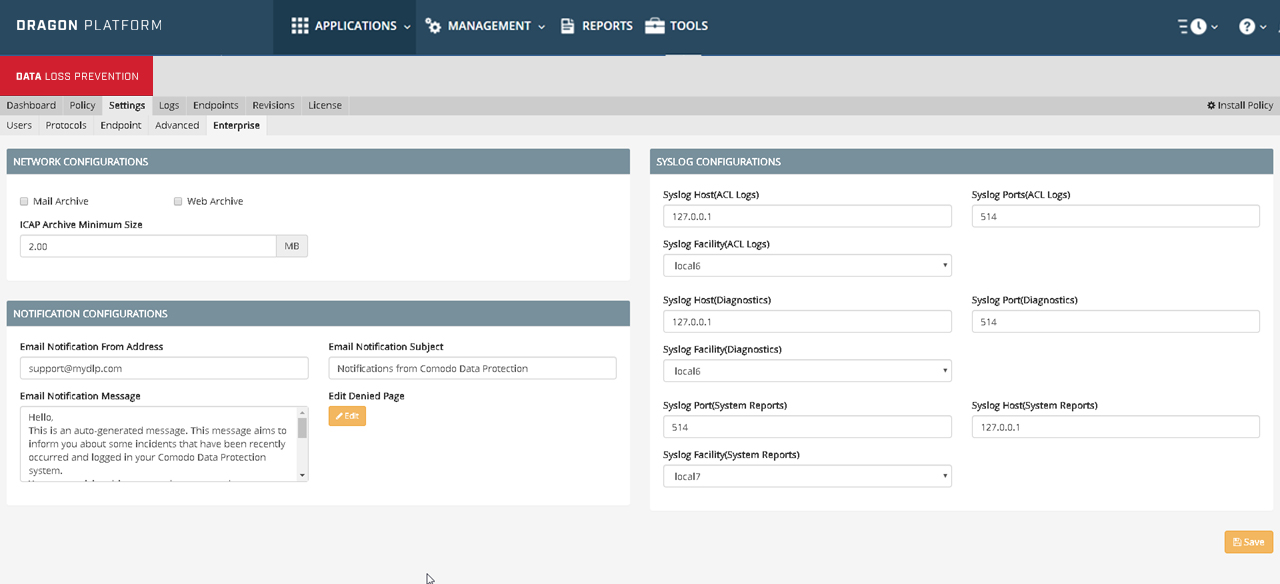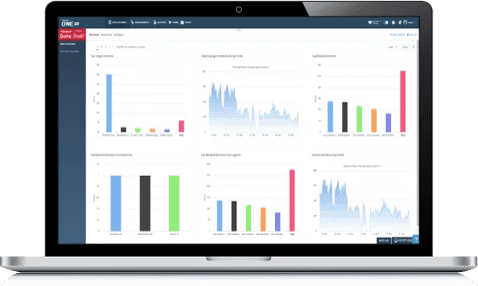Keep Your Sensitive Business Data And Customers Safe
What is Data Loss Prevention (DLP)?

DATA LOSS PREVENTION’S INSTANT BUSINESS BENEFITS

Monitor Movement of Data in Real-Time

Customize your Protection Policies

Strengthen Regulatory Compliance

Boost policy effectiveness through reporting feature.
PREVENT EXPOSURE OF SENSITIVE DATA - DATA LOSS PREVENTION
Data Loss Prevention Monitors and Controls the Movement and Storage of Sensitive Data Across your Network
Data Loss Prevention - GAIN DATA VISIBILITY IN YOUR NETWORK


PREVENT IMPROPER USE OF SENSITIVE DATA
Data Loss Prevention (DLP) – Cybersecurity isn’t just about keeping malicious software out of the network, it’s also about protecting sensitive data inside the network. The starting point of many data exposures is everyday behavior of internal employees. While some employees may have bad intentions, most are simply not aware of the repercussions of their normal activities. The costs of data exposure range from loss of customer trust, damage to your company’s brand and regulatory fines.
-
Create activity reports to gain insight into
policy effectiveness over time. -
Detect Content by keyword, regular expression,
document database and built-in matchers. - Protect data in motion, in use or at rest.
SECURE CUSTOMER & CORPORATE DATA
-
Central management to configure and implement
policy-based actions. -
Visibility to discover, monitor and control the movement of
sensitive data across your network. - Strengthen compliance according to industry regulations.

WHY CHOOSE OUR
DATA LOSS PREVENTION SERVICES
Control the movement via outbound traffic activities
Control clipboard, network share, printer and screenshot activities
Control of data stored on all endpoints, databases and file servers
Configure policy-based actions to prevent the loss of sensitive data
Ensure compliance with applicable data protection regulations
Gain visibility of all web activity through custom reports
Analyst Recognition
![]()
![]()
![]()
![]()
![]()
ADD-ON MODULES
Gateway
Gateway
Response
Quickly identify threats lurking on your network with 100% file verdicts in under 5 minutes
Data Loss Prevention (DLP) is a set of security measures and technologies designed to prevent the unauthorized disclosure, leakage, or theft of sensitive or confidential data.
Sensitive data that may require DLP include personally identifiable information (PII), financial data, trade secrets, intellectual property, customer data, and health records.
DLP works by identifying and classifying sensitive data, monitoring the data in use, in motion, and at rest, and enforcing policies and rules to prevent unauthorized access, use, or disclosure of sensitive data.
Benefits of DLP include enhanced data security, increased compliance with data protection regulations, protection of intellectual property and trade secrets, reduced risk of data breaches, and protection of customer trust.
Challenges of implementing Data Loss Prevention include the complexity of identifying and classifying sensitive data, the risk of false positives and negatives, the need for ongoing maintenance and updates, and the need to balance security with user productivity.
Organizations can ensure the effectiveness of their DLP program by establishing clear policies and procedures, conducting regular risk assessments and audits, providing ongoing training and awareness to employees, and using advanced technologies such as machine learning and behavioral analytics to enhance DLP capabilities.
Some key features of an effective Data Loss Prevention solution include the ability to identify and classify sensitive data, the ability to monitor data usage across multiple environments, the ability to enforce policies and rules to prevent data leakage or theft, and the ability to provide real-time alerts and reporting to security teams.
Common data leakage channels that Data Loss Prevention programs can help prevent include email, instant messaging, social media, cloud storage services, and removable storage devices.
DLP can help with compliance with data protection regulations by enforcing policies and rules to prevent unauthorized access, use, or disclosure of sensitive data. This can help organizations meet regulatory requirements and avoid costly penalties and fines.
Yes, Data Loss Prevention solutions can be customized to meet specific business needs. Organizations can define their own policies and rules for data protection and tailor their DLP solution accordingly.
DLP solutions can be integrated with other security technologies such as endpoint security, identity and access management, and security information and event management (SIEM) systems. This integration can help organizations achieve a more comprehensive and effective security posture.
Best practices for implementing DLP include starting with a clear understanding of your data assets, establishing policies and rules for data protection, involving key stakeholders in the implementation process, providing ongoing training and awareness to employees, and conducting regular risk assessments and audits.